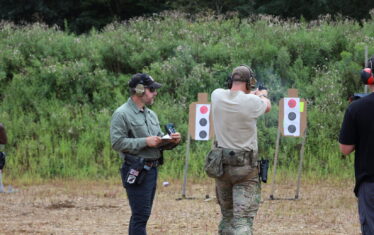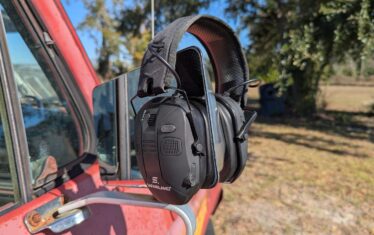“What’s that?” My wife asked as I opened up a Walther WMP that showed up for me to review.
I replied that it’s a .22 Mag pistol but caught myself struggling for words beyond that. What is .22 Winchester Magnum Rimfire, anyway? It’s too expensive to be a plinking round, awfully small for self-defense, and not exactly easy to find at your local sporting goods store.
More than 60 years after its introduction, .22 WMR is still finding its place. Newer (and better) cartridges may have passed up the old varmint-hunting round, but it’s taken out a second lease on life as a pistol cartridge in recent years.
It occurs to me that many of us — experienced shooters included — are wondering, where does .22 WMR belong?
The .22 WMR Origin Story
The 1950s and 1960s were a heyday of cartridge creativity. Wildcatters and manufacturers were churning out new creations at a rapid clip, resulting in classics like .44 Mag, .243 Win, 7mm Rem Mag, and 300 Win Mag.
In 1959, Winchester served up a tiny magnum called .22 WMR specifically for pest control. Varmint species weren’t just a nuisance at the time; they were a serious economic problem in the agricultural space. According to Natural History, the U.S. Fish & Wildlife Service culled nearly two million coyotes between 1915 and 1947.
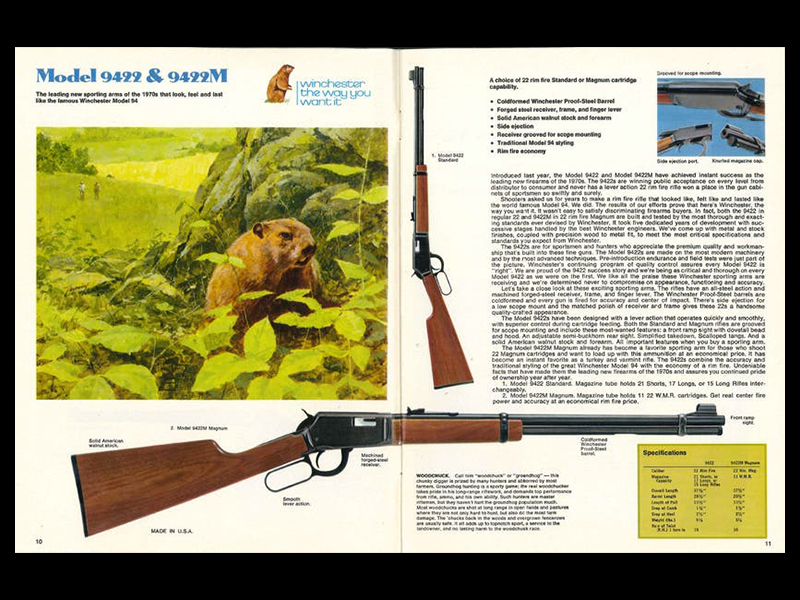
The rimfire .22 WMR offered more power and increased range compared to .22 LR but was cheaper and easier to shoot than centerfire cartridges of the day. Farmers and ranchers were more than happy to throw a lightweight .22 WMR lever-action rifle in the cab of their truck or tractor and engage targets of opportunity throughout the workday.
As cartridge evolution rolled on, the straight-walled .22 WMR got left behind for the most part. Small, shouldered cartridges like .17 HMR and .204 Ruger offered similar or better terminal effects with flatter trajectories. The military’s adoption of the vastly superior 5.56 NATO made it (and .223 Win) readily available and dirt cheap. And, as before, shooters who really wanted to reach out and touch a coyote stuck with the blazing-fast .22-250 Rem.
Winchester’s rimfire creation couldn’t keep up with the times, but it never stopped selling entirely. Six decades on, people still enjoy shooting this odd little magnum. It’s historically been a rifle cartridge but, lately, it’s moved increasingly into the pistol market.
If you want a deeper dive into the history of the cartridge, give this episode of the Vortex Nation podcast a listen.
Ballistic Breakdown of the .22 WMR
The value proposition for the cartridge is that it’s small and fast. It’s the same argument that leads people to choose 5.56 NATO over 7.62×39 and 6.5 Creedmoor over .308 Win. But what exactly does that mean?
Let’s check in with the Sporting Arms and Ammunition Manufacturers’ Institute (SAAMI) to find out.
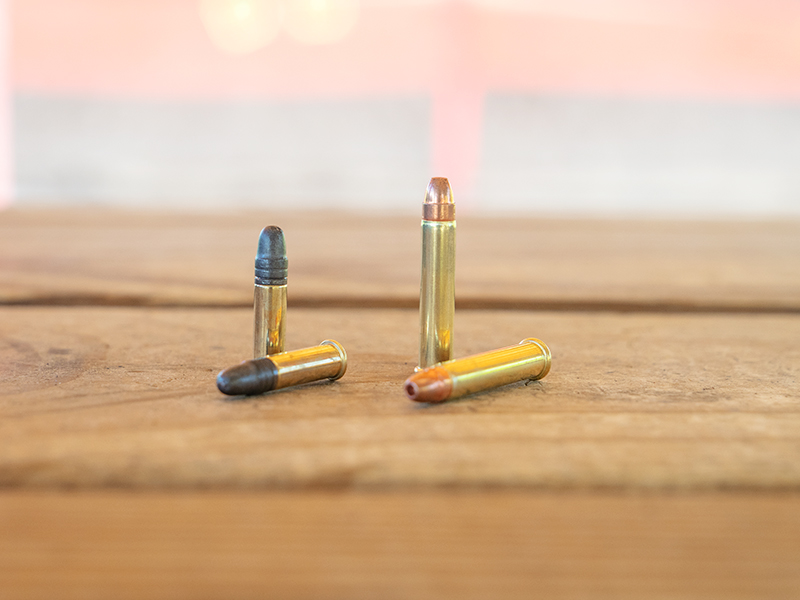
According to SAAMI testing, .22 WMR fires a 40-grain bullet at 1,875 feet per second — up to 835 fps faster than the same projectile out of a .22 LR cartridge. That’s because the extra powder in a .22 WMR case generates more energy, even though they both recorded 24,000 pounds per square inch of pressure during testing. According to Ammo.com, .22 WMR offers 312 foot-pounds of muzzle energy whereas .22 LR can only muster 135 ft-lbs.
But how does that stack up against, say, 5.7×28 and 9mm? The three cartridges are very different but the comparison always seems to come up now that more people associate .22 WMR with semi-automatic pistols like the KelTec PMR30, Smith & Wesson M&P 22 Magnum, and Walther WMP.
Lucky Gunner produced a great video on the 5.7×28 cartridge that addressed the comparison to .22 WMR. There is some overlap in performance, as the video points out, but only in the sense that similar-weight projectiles achieve the same muzzle velocity out of a .22 WMR rifle and a 5.7×28 pistol. Powder takes time to burn, remember, so pistol barrels aren’t ideal platforms for long-burning cartridges like .22 WMR.
SAAMI testing reveals that 9mm isn’t as fast as .22 WMR (roughly 1,200 fps for 115-grain 9mm against 1,875 for 40-grain .22 WMR) but that speed advantage disappears once you factor in that the 9mm projectile is nearly three times as heavy. The extra mass translates to a massive gain in energy and terminal effects. There’s a reason the vast majority of police departments issue 9mm and none use .22 WMR.
Can you use it for Self-Defense?
Despite the ballistic setbacks, someone always ends up asking if .22 WMR has merits as a defensive round. That’s not an unreasonable question.
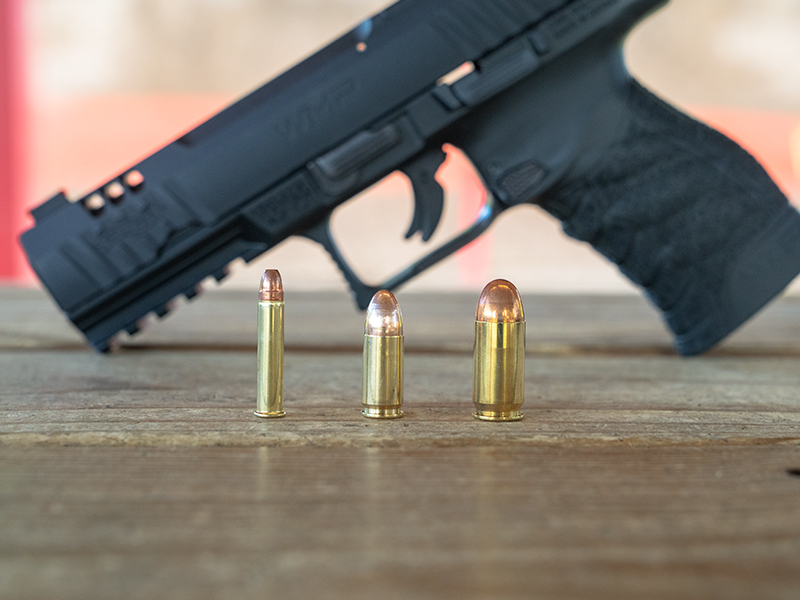
It only takes one shot to realize that recoil is effectively nonexistent. Since recoil management is one of the most common challenges for the average pistol owner, this takes a major challenge off the board entirely. Even a novice should be able to rip off shots as fast as they can wiggle their trigger finger with minimal shift in the point of impact.
And yet, the audible snap of .22 WMR sounds very little like the modest pop of .22 LR. To a startled home intruder, there isn’t enough of a difference between the report of .22 WMR bouncing off the walls and 9mm to make them say, “That’s just a little .22.”
Finally, the bullet construction you have access to when you shoot .22 WMR is better than the round-nosed lead slugs you get from .22 LR. Ammunition manufacturer CCI, for example, offers .22 WMR with copper-jacketed hollow points or even polymer tips. These bullets are made for varmint hunting, but they’re more effective and accurate across the board than the all-lead bullets you typically see in rimfire ammunition. You can even step down from 40 to 30 grains to increase muzzle velocity to a very respectable 2,200 feet per second.
It has potential, but this isn’t a cartridge I’d jump to recommend for self-defense.
The Case For .22 WMR Pistols
From a numbers standpoint, making a case for using .22 WMR as a defensive pistol cartridge is tough sledding. It’s leagues behind the reigning champion, 9mm, in terms of terminal ballistics. Even the lowly .380 ACP is probably a better option.
If you’re looking for a target pistol, why would you pay 15 to 20 cents per round on .22 WMR when you could spend five cents per round on .22 LR to punch the same quarter-inch holes in paper? Easy answer — you wouldn’t.
But there’s more to life than numbers on a page.
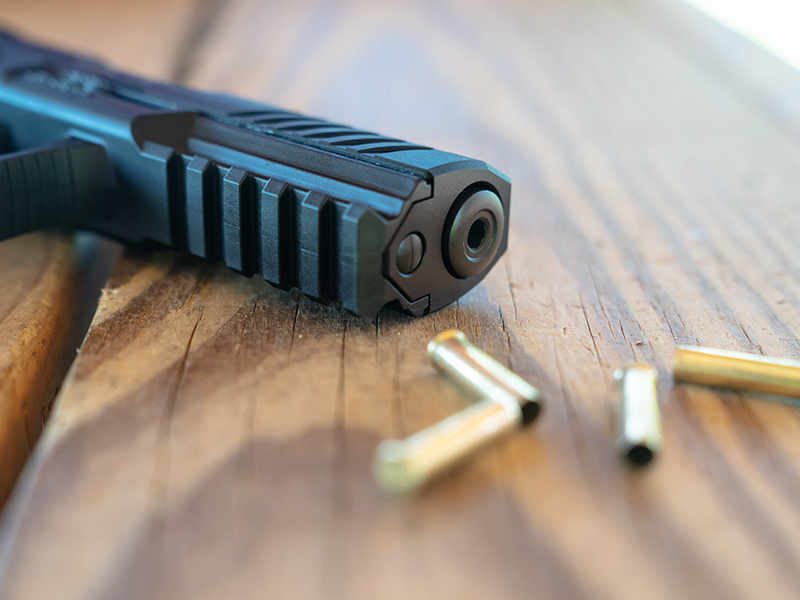
For people with strength or dexterity issues, racking a pistol’s slide can be a serious barrier to entry. Press-checking the average 9mm pistol might be downright impossible. By contrast, the WMP’s recoil spring is so light that loading and checking the chamber require almost no grip strength.
If you’re someone who feels like you can’t safely and effectively manipulate a pistol, .22 WMR might change that. No, it’s not a powerhouse but yes, it’s better than .22 LR.
Don’t let perfection be the enemy of better.






